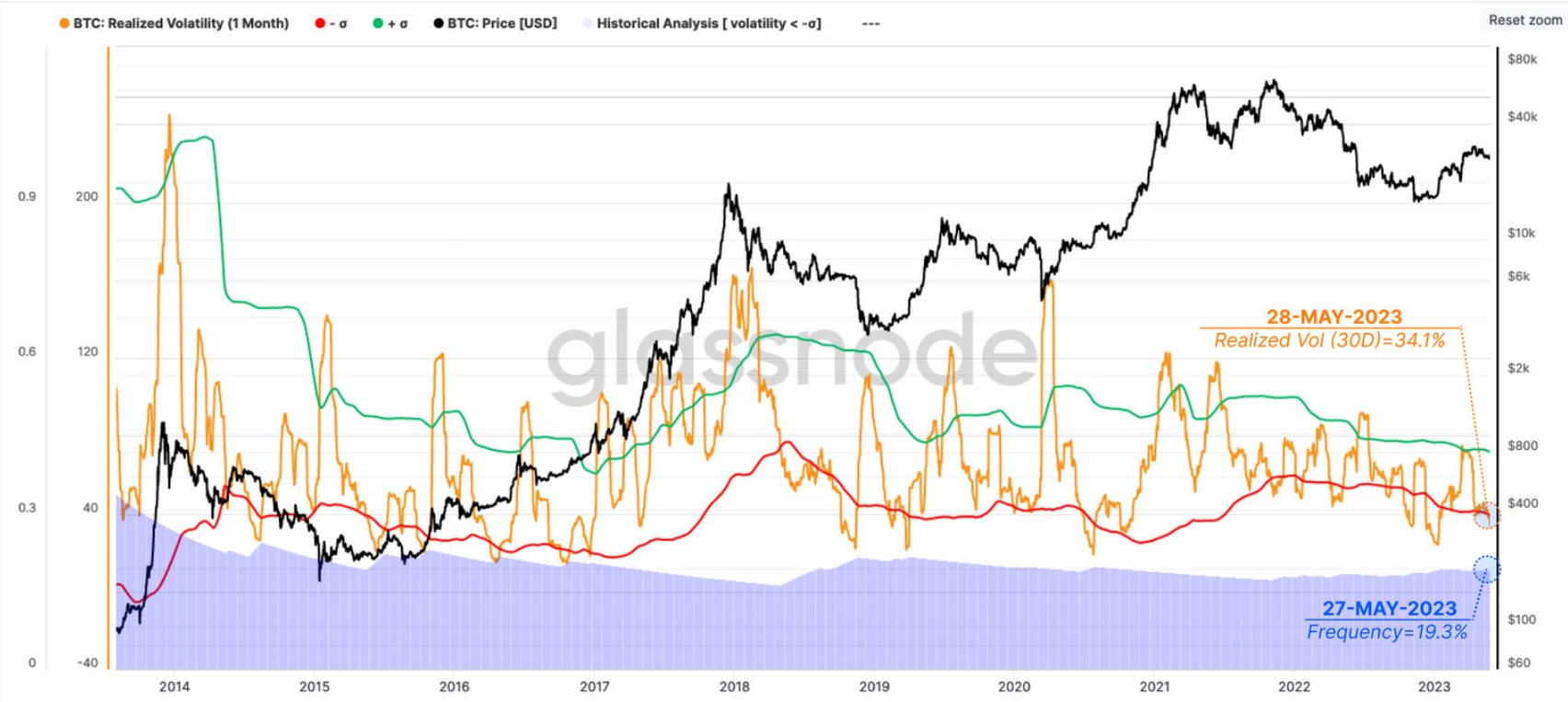- Due to macroeconomic uncertainty and low market liquidity, Bitcoin’s volatility has historically fallen to low levels.
- The monthly volatility measure for Bitcoin has fallen below the lower bounds of the historical Bollinger Band, indicating an upcoming increase in volatility.
- The put-call ratio for Bitcoin options has risen from 0.38 to 0.50.
Current on-chain and option data for Bitcoin indicates that volatility may increase in June.
Current Data for Bitcoin Indicates Volatility!
Due to macroeconomic uncertainty and low market liquidity, Bitcoin’s volatility has historically fallen to low levels. However, on-chain and option market data indicate an expected increase in volatility in June.
Bitcoin’s Bitcoin Volatility Index, which measures daily fluctuations in Bitcoin’s price, shows that Bitcoin’s 30-day volatility is 1.52%. This value is less than half of the annual averages in Bitcoin’s history and is generally lower than periods when it is above 4%.
According to Glassnode, the expectation of volatility can be considered a “logical outcome” based on the fact that low volatility levels have been seen in only 19.3% of Bitcoin’s price history.
The latest weekly update from on-chain analytics firm Glassnode shows that Bitcoin’s monthly realized volatility measure has fallen below the lower bounds of the historical Bollinger Band, indicating an upcoming increase in volatility.
Bollinger Bands for Bitcoin’s monthly realized volatility measure.
Long-Term Bitcoin Investor Metric Indicates Price Will Experience an Increase
The chain transfer volumes for Bitcoin on crypto exchanges have reached historically low levels. The price is also trading close to short-term investor sentiment, indicating a “balance position of profit and loss for new investors buying coins during the 2021-2022 bull cycle and beyond,” according to the report. Currently, 50% of new investors are making a profit while the rest are at a loss.
However, it has been observed that long-term investors have been active in the recent correction, which supports volatility, according to analysts.
Glassnode classifies long-term investor supply as being in a single wallet for more than 155 days.
The gray bars in the image below show the binary spending indicator for long-term investors (LTH); it tracks whether the LTH spending over the past seven days is enough to reduce the total amount of LTH spending.
This indicator shows previous instances where LTH spending has increased and usually follows an increase in volatility.
Binary Spending Indicator for Long-Term Investors
The recent correction in Bitcoin saw a small decrease in the indicator, and it was interpreted as “a net outflow by LTHs in four out of seven days, which is similar to the outflow liquidity events seen since the beginning of the year.”
Analysts expect the market to reach a balance level where long-term ownership supply accumulates or distributes due to accumulation or distribution.
Option Markets Re-Testing Traders’ Expectations of Volatility
Option market data indicates a theory of upcoming volatility.
The latest option market expiration in May turned into a boring event despite a significant conceptual value of $2.3 billion. However, prolonged compression of volatility may indicate a significant price movement.
Bitfinex’s latest Alpha report shows that the DVOL index, which reflects Bitcoin option volatility in the next 30 days, has fallen from 50 to 45 before expiration, representing the lowest level this year.



